Top 10 technology leaders 2020
Technology leaders had to rethink their business strategies during the pandemic. They should emerge leaner but fitter for the challenges ahead
MAN Energy Solutions chief executive Uwe Lauber leads the rankings of our top 10 tech leaders as one of the industry stakeholders setting up the Maersk Mc-Kinney Moller Center for Zero Carbon Shipping and its leadership in developing a two-stroke ammonia-fuelled engine
01 / Uwe Lauber, MAN Energy Solutions
MAN Energy Solutions responded to tough economic conditions by expediting its transition from a manufacturer of main engines to a provider of marine technology solutions.
Chief executive Uwe Lauber cautioned that it might be three years before a return to pre-pandemic business levels.
The company joined industry stakeholders in 2020 in setting up the Maersk Mc-Kinney Moller Center for Zero Carbon Shipping, a move aligned with corporate strategy.
MAN-ES took leadership of a consortium to develop a two-stroke, ammonia-fuelled engine for shipping. The project will develop the engine in 2024. It follows work on engines driven by methanol, ethane and liquefied petroleum gas.
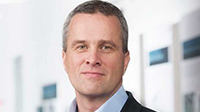 02 / Juha Koskela, ABB Marine & Ports
02 / Juha Koskela, ABB Marine & Ports
ABB’s partnership with offshore and cruise sectors brought several technologies to the industry over 10 years but these sectors have stalled. Mr Koskela now focuses on three concepts: electric propulsion, data-driven digital decision support and integrated solutions.
The company has seen “unprecedented levels” of service inquiries and uptake during 2020, especially for remote monitoring and diagnostics.
In November 2020, it signed a contract to supply the largest and most powerful Azipod propulsion units for six newbuilding liquefied natural gas carriers from Daewoo Shipbuilding. This followed contracts for battery technology in shuttle tankers, hybrid propulsion for ferries, and a partnership with Hydrogène de France for fuel cell technology for deepsea ships.
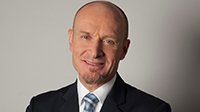 03 / Klaus Heim, WinGD
03 / Klaus Heim, WinGD
The Switzerland-headquartered subsidiary of China State Shipbuilding Corp released the dual-fuel, low-speed X92DF engine in 2020, the world’s biggest of its kind for large and ultra large container vessels. The propulsion system has been designed to run on LNG in addition to conventional heavy fuel oil and diesel oil.
It also unveiled iCER (Intelligent Control by Exhaust Recycling) technology to cut methane slip emissions by 50% when using LNG in an X-DF engine, while cutting fuel consumption by 3%-5%.
The company believes “the internal combustion engine, as the main source of propulsion power for merchant shipping, will continue to play a major role beyond 2050”.
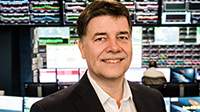 04 / Ronald Spithout, Inmarsat Maritime
04 / Ronald Spithout, Inmarsat Maritime
The health crisis generated a significant rise in demand for connectivity, mainly for crew welfare and vessel performance solutions. The mobile satellite communications provider responded by cutting the cost of voice calling for 40,000 ships.
In mid-year, the company began working with a crew healthcare specialist and a software platform provider to provide a free video call service for more than 1,000 ships.
Among seven new satellites scheduled for launch in 2023-2024 will be the first high throughput satellites dedicated to the Arctic region.
Agreement was also reached in 2020 on taking over Speedcast’s primary Fleet Xpress, FleetBroadband and Fleet One service contracts.
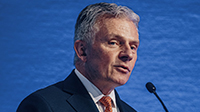 05 / Jaakko Eskola, Wärtsilä
05 / Jaakko Eskola, Wärtsilä
Wärtsilä split its marine business into three divisions in 2020, focusing on power, systems and voyage (navigation, vessel operations, training). Each division has its own leader.
Chief executive Jaakko Eskola told investors the pandemic had hit sales of equipment and services hard. Weak offshore and cruiseship orders have left equipment providers chasing the same contracts.
In response, Wärtsilä will offer a ‘total solution’, rather than single pieces of equipment.
Sea trials are under way on a very large gas carrier with Wärtsilä’s pioneering LPG fuel supply system.
Håkan Agnevall, currently president of Volvo’s bus division, will succeed Mr Eskola in early 2021.
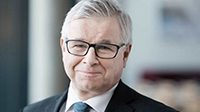 06 / Egil Haugsdal, Kongsberg Maritime
06 / Egil Haugsdal, Kongsberg Maritime
Kongsberg Maritime responded to the collapse of the offshore sector in 2014 by a strategy of diversification. This paid off as the coronavirus outbreak dampened investment decisions in 2020.
However, Kongsberg has a solid orderbook for smart data and analytics, remote control, electrification and energy storage solutions for the newbuilding and retrofit markets in merchant, fishery and offshore sectors.
Among successes are innovative propulsion and manoeuvring systems for Finnish ferries; draught and trim optimisation software for an oil major; and a health management system for engines and other machinery.
Rolls-Royce Commercial Marine has now been fully integrated into the business.
 07 / Ka Sam-hyun, Korea Shipbuilding & Offshore Engineering
07 / Ka Sam-hyun, Korea Shipbuilding & Offshore Engineering
In the search for zero-carbon fuels, the approval given by Korean Register and Liberian Registry to the design of a large commercial liquefied hydrogen carrier is a major step forward.
Korea Shipbuilding and Offshore Engineering (formerly Hyundai Heavy Industries), Hyundai Mipo Shipyard and Hyundai Glovis have come up with a double-structured, vacuum-insulated tank to minimise hydrogen boil-off during operation.
Gas will be reduced to 1/800, then liquefied at -253 degrees Celsius. This requires advanced cryogenic technology to preserve it.
The design is for a 20,000 cu m vessel. KSOE developed the treatment system, with the basic design by Hyundai Mipo.
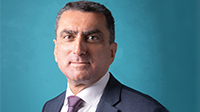 08 / Mike Konstantinidis, METIS Cyberspace Technology
08 / Mike Konstantinidis, METIS Cyberspace Technology
METIS was set up in Athens in 2016 to bring machine learning and artificial intelligence to vessel-generated data.
By monitoring and analysing vessel performance, the company enables owners and managers to plan and optimise routes, predict fuel consumption, optimise bunkering, comply with regulations and report emissions.
In 2020, METIS reached agreement to offer a dedicated application for Inmarsat’s Fleet Data service customers. It also launched a software module to enable monitoring and tracking of charter party agreement performance using visually rich dashboards.
Chief executive Mike Konstantinidis joined METIS from a position of international business development director at SingularLogic, the Greek enterprise software solutions provider.
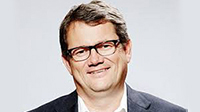 09 / Morten Fon, Jotun
09 / Morten Fon, Jotun
Jotun’s innovative HullSkater robotic technology was launched early in 2020. The robot is controlled via a 4G connection, removing biofouling and inspecting ships’ hulls in line with vessel schedules and data analytics.
The technology, which was developed with Kongsberg, will increase vessel performance and reduce emissions.
The first commercial contract was signed by MSC for its 14,000 teu MSC Eva. HullSkater will maintain an always-clean hull.
Fouling increases downtime for inspection and cleaning, increases fuel cost and emissions and might risk speed claims for ships operating under time charters. Keeping the coating free from fouling will become part of the decarbonisation agenda.
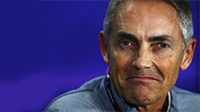 10 / Martin Whitmarsh, BAR Technologies
10 / Martin Whitmarsh, BAR Technologies
Olympic gold medal-winning yachtsman Sir Ben Ainslie is the driving force behind a reboot of sail technology for commercial marine.
BAR Technologies’ WindWings — large, solid wing sails up to 45 metres in height, fitted to the deck of bulk vessels — is an extension of yacht racing and Formula 1 racing. It has received the backing of Cargill’s head of ocean transport, Jan Dieleman.
The company claims that harnessing wind power would reduce a ship’s CO2 emissions by as much as 30%. First vessels are expected to be on the water by 2022.
BAR Technologies chairman Martin Whitmarsh said Cargill’s endorsement was a significant step forward.
The Top 10 technology leaders list is compiled by the Lloyd’s List editorial team and considers people and companies that are driving real digital change across the maritime industries
Not a subscriber? Find out how Lloyd’s List can help you and your company stay informed with expert analysis of the key issues shaping shipping including daily briefings, curated news, interactive data tools, podcasts, webinars and much more. Request a demonstration here.
